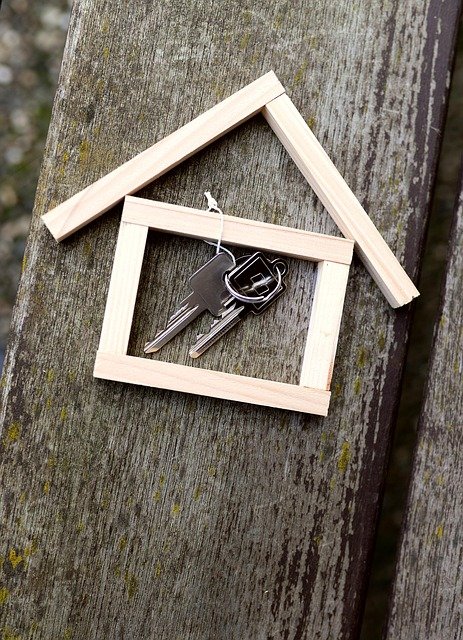Understanding Log Cabin Construction and Materials Guide
Log cabins represent one of the most enduring forms of residential construction, combining traditional craftsmanship with modern building techniques. These structures offer unique benefits including natural insulation, aesthetic appeal, and connection to nature. Understanding the fundamentals of log cabin construction, materials, and maintenance requirements helps homeowners make informed decisions about this distinctive building style.

Log cabins evoke a sense of rustic charm and connection to nature that few other structures can match. With roots dating back centuries, these distinctive dwellings have evolved from simple frontier shelters to sophisticated modern homes while maintaining their characteristic warmth and appeal. Whether you’re considering purchasing a log cabin kit or simply interested in traditional building methods, understanding the construction techniques and materials involved is essential. This guide explores the fundamental elements that define log cabins, from traditional construction approaches to maintenance requirements that ensure their longevity.
What Is a Log Cabin and Its Core Features
At its essence, a log cabin is a structure built primarily from horizontal logs that interlock at the corners. Unlike conventional stick-frame construction, log cabins use whole or milled logs as both the structural and aesthetic elements of the building. The defining characteristics include exposed log walls (both interior and exterior), distinctive corner notching systems, and natural thermal properties. Traditional log cabins feature saddle-notch, dovetail, or corner-post joinery techniques that lock logs together without requiring nails or fasteners. The core appeal lies in their natural insulation properties—the dense wood provides thermal mass that absorbs heat during the day and releases it slowly at night, creating natural temperature regulation. Additionally, log cabins typically feature generous roof overhangs to protect the walls from weather exposure, large windows to maximize natural light, and open floor plans that showcase the structural elements.
How Log Cabins Are Constructed Using Traditional Methods
Traditional log cabin construction begins with careful log selection and preparation. Historically, builders would harvest straight trees (often pine, cedar, or spruce) during winter when sap content was lowest, then allow them to season for months before construction. The logs would be hand-peeled, shaped with axes and adzes, and carefully notched to create tight-fitting corners. The cornerstone of traditional construction is the notching system—each log must be carefully fitted to the one below it, with notches precisely cut to create weather-tight joints. Builders would raise the walls log by log, using simple tools and mechanical advantage rather than modern machinery. Chinking, a mixture of clay, lime, and other materials, would fill any gaps between logs to improve weather resistance. Roofing traditionally consisted of split wooden shakes or shingles, though modern cabins might use contemporary roofing materials. This labor-intensive process created structures that could last for generations when properly maintained, with many historic log cabins still standing after hundreds of years as testament to the effectiveness of these methods.
Common Building Materials in Log Cabins Beyond Wood
While logs form the primary structure of a log cabin, numerous other materials play crucial supporting roles. Stone and concrete provide stable foundations that keep logs elevated from ground moisture—a critical factor in preventing rot. Modern log cabins often incorporate specialized synthetic chinking materials that offer superior flexibility and weather resistance compared to traditional clay mixtures. Metal components include flashing around windows and doors, specialized fasteners designed for log construction, and reinforcement plates at structural junctions. Insulation materials vary widely, with modern cabins utilizing specialized products designed specifically for log homes, particularly in roof systems and between floor levels. Window and door installations require special consideration in log structures, with adjustable jambs that accommodate the natural settling and movement of logs over time. Additionally, contemporary log cabins frequently incorporate modern conveniences like plumbing and electrical systems, which require specialized installation techniques to work harmoniously with the wooden structure while meeting building codes.
Lifespan and Durability of Log Cabins Over Time
Properly constructed and maintained log cabins demonstrate remarkable longevity, with many historic examples standing for centuries. The durability of a log cabin depends on several key factors, including wood species selection, construction techniques, site placement, and ongoing maintenance. Cedar, cypress, and heartwood pine offer natural decay resistance, while proper roof overhangs and elevated foundations protect logs from moisture—the primary enemy of wood structures. The natural thermal properties of logs contribute to their durability; the mass of the wood moderates temperature and humidity fluctuations that can cause structural stress in conventional buildings. Modern preservation treatments can significantly extend log life by protecting against insects, fungi, and UV damage. While log cabins do experience natural settling over time as wood dries and compresses under load, proper construction techniques accommodate this movement without compromising structural integrity. With appropriate care, a well-built log cabin can easily last 100 years or more, making them comparable to or exceeding the lifespan of many conventional construction methods.
Maintenance Needs of Log Cabins Throughout Their Lifecycle
Log cabin maintenance follows a predictable cycle that begins with the initial settling period and continues throughout the structure’s life. During the first few years, regular adjustments to doors, windows, and utilities may be necessary as the logs naturally settle and shrink. Exterior maintenance forms the cornerstone of log cabin preservation, with periodic inspection and reapplication of protective finishes every 3-7 years depending on exposure conditions. These finishes—typically combinations of preservatives, water repellents, and UV blockers—protect against the cabin’s primary threats: moisture, sunlight, and pests. Regular inspection for signs of water intrusion, insect activity, or mold growth allows for early intervention before serious damage occurs. Chinking material between logs requires periodic inspection and repair to maintain the cabin’s weather resistance and energy efficiency. Interior maintenance is generally less demanding, though logs should be dusted regularly and occasionally treated with appropriate products to maintain their appearance. While maintenance requirements exceed those of vinyl-sided homes, many log cabin owners find the routine care creates a deeper connection to their homes and an appreciation for the natural materials.
Log Cabin Kit Options and Considerations
Log cabin kits represent a middle ground between traditional hand-built cabins and conventional construction, offering pre-cut and prepared materials with varying degrees of completion. These kits range from basic packages containing just the logs and fasteners to comprehensive systems including windows, doors, roofing materials, and interior components. The market includes several distinct construction styles, each with specific characteristics and price points.
| Kit Type | Construction Style | Typical Price Range | What’s Included |
|---|---|---|---|
| Handcrafted Log Packages | Full-round logs with traditional notching | $70-$150+ per square foot | Logs, fasteners, basic blueprints |
| Milled Log Kits | Uniform machined logs with tongue-and-groove | $50-$100 per square foot | Logs, fasteners, windows, doors, roofing materials |
| Timber Frame Hybrids | Post-and-beam structure with log accents | $60-$120 per square foot | Frame components, exterior materials, some finishing elements |
| Modular Log Cabins | Factory-built sections assembled on-site | $80-$200 per square foot | Complete cabin including most finishing work |
Prices, rates, or cost estimates mentioned in this article are based on the latest available information but may change over time. Independent research is advised before making financial decisions.
When selecting a kit, considerations include the manufacturer’s reputation, material quality, completeness of the package, and available support during construction. Most manufacturers offer design customization, though this typically increases costs. While kits simplify the construction process, they still require significant skill to assemble correctly, with many buyers hiring professional contractors for at least portions of the build. The appeal of kits lies in their ability to provide the authentic log cabin experience while reducing some of the complexity and specialized knowledge required for traditional construction methods.
Log cabins continue to captivate with their blend of natural beauty, historical significance, and practical performance. From traditional hand-hewn construction to modern manufactured kits, these structures offer a living connection to building traditions that span centuries. Understanding the materials, construction techniques, and maintenance requirements helps potential owners make informed decisions about pursuing this distinctive housing option. With proper care and attention to detail, today’s log cabins can provide comfortable, energy-efficient homes that will stand for generations, just as their historical predecessors have done.




